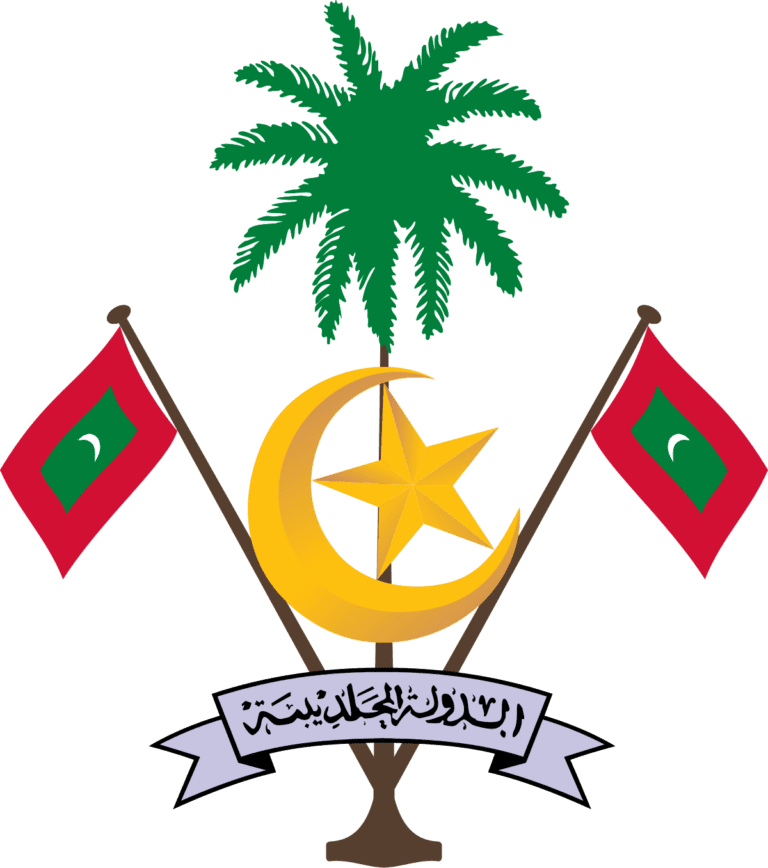Tourism is the largest economic industry in the Maldives, as it plays an important role in earning foreign exchange revenues and employing 25,000 people in the tertiary sector of the country. The archipelago of the Maldives is the main source of attraction to many tourists visiting the island country.
The independent nation is made up of around 1,200 coral islands and sandbanks, of which 200 are inhabited, stretching more than 820 kilometres from north to south and 130 kilometres from east to west.
This unique geography has resulted in a reputation for tourist luxury, with resorts often being housed on their own island and offering the perfect, all-inclusive private getaway.
Permanent inhabitants are almost all Maldivian, an ethnic group formed as a result of various groups of settlers arriving throughout the country’s history, the first being Tamil and Sinhalese peoples from Sri Lanka and Southern India.
An important source of employment for locals derives from tourism, with visitors to the islands spoiled by the pristine beaches and opportunities to explore sea life and partake in water sports.
The past decade has seen the industry open up, not least because inhabitants have been granted the power to build guesthouses on their islands, providing competition to resorts which have traditionally dominated the accommodation scene here.
History
Tourism in the Maldives began in 1972. A United Nations mission on development which visited the Maldives Islands in the 1960s did not recommend tourism, claiming that the islands were not suitable. Ever since the launch of the first resort in Maldives in 1972, however, tourism in Maldives has flourished. The arrival of the first tourist’s group is estimated to have occurred in February 1972. Tourism in Maldives started with just two resorts with a capacity of about 280 beds. Kurumba Island Resort is the first resort opened in Maldives, followed by Bandos Island Resort. At present, there are over 132 resorts located in the different atolls constituting the Republic of Maldives. Over the decades, the number of tourists in Maldives is rising continuously. In 2009, local island guesthouses started popping up in the Maldives. This was thanks to a change in regulations that began to officially allow tourists to stay among the local population, rather than just on privately owned resort islands. In 2015, a total of 1.2 million tourists visited the Maldives, and another 1.5 million visited in 2016.
In 2018, the Maldives operated 130 island-resorts. Current work is being undertaken to boost tourism room capacity by constructing another 23 properties, which will include foreign developers such as the Waldorf Astoria, Mövenpick, Pullman and the Hard Rock Café Hotel. Extensive upgrades at the Velana International Airport will allow for 7.5 million visitors by early 2019 or 2020.
Level of tourism development
Tourism in the Maldives has started in 1972 with only three hotels, now – there are more than 100 operational resorts. The unique condition of Maldives is that one island is one resort, meaning that one hotel occupies the whole island. By doing so, resorts provide more privacy and more luxury for their visitors. The Maldives are also trying to stay eco-friendly and use more of solar energy rather than diesel. The Maldives provide facilities and services, entertainment and telecommunication services, they also provide numerous resorts, hotels, guest houses, and liveboards.
Overview of a typical tropical resort
A tourist resort in the Maldives typically consists of a hotel on its own island, with its population entirely made up of tourists and work force, with no local people or houses.
Climate change
The Maldives’ economy is greatly influenced by any climate changes. Tourism sector can be damaged by the increased likelihood of violent storms, damage to coral reefs, and beach erosion, which are now more likely to happen because of the rising seas.
As a consequence of climate change, Maldives is now facing the problem of rising seas and coral reefs bleaching. According to the World Bank, with “future sea levels projected to increase in the range of 10 to 100 centimeters by the year 2100, the entire country could be submerged.” New government has made a decision to fight the rising seas problem with geoengineering projects instead of trying to move the population. The idea is to rent out other islands and even build new islands, so the population of those islands who are more in trouble could be relocated. One of those built islands is Hulhumale’.
It has been also pointed out that some islands can grow naturally.
World Bank states that, “Rising sea temperatures also threaten the coral reefs and cause bleaching and death, with the most severe damage in areas that are stressed by pollutants, or damaged by physical disturbance. Vulnerability to climate change hazards has been magnified by damage to coral reefs which has in turn impaired their protective function, thus a negative cycle of impact.”
Environmental concerns
Ecotourism
There is some promotion of ecotourism in the Maldives, with resorts emphasizing recycling of heat that is wasted in producing electricity and stricter policies of waste disposal.
Nevertheless, the Maldives have frequently come under criticism for their lack of protection of the local shark populations, which have sharply decreased after being hunted extensively for decades. In some areas, sharks have entirely disappeared. Sharks are hunted primarily for their fins. Shark fins are exported from the Maldives to other countries in Asia, where they are regarded as a delicacy. The fins are amputated from the live animals, which are then thrown back alive into the sea.
Although this practice is prohibited by law in the Maldives, these laws are not respected or enforced by the local authorities.
In 2001, a local environmental organization called Seamarc/Marine savers (known onsite as Reefscapers), set up an ambitious program of reimplantation of coral in damaged areas, on the basis of resort sponsorship.
“There are big challenges that come with the advantages of the islands’ tourist assets, however,” said Richard Damania, World Bank Lead Environmental Economist. “The country’s coral reefs, which protect it from storm surges and serve as the main attraction for the tourism-driven economy, are in danger of being damaged or destroyed by poorly handled waste disposal methods.”
Natural environment
Its tourism industry is today the Maldives’ largest revenue generator. Due to their underwater scenery and clean water, the Maldives is ranked among the best recreational diving destinations of the world,[19] with over 60 local dive sites across the islands. It was also reported to be the world’s most desired honeymoon destination, according to a global survey by Agoda.com.
In Focus: Male
The Maldivian capital Male is fascinating in that it represents a stark contrast to the isolated tranquillity of the rest of the island nation.
While the city is not awash with attractions, owing largely to its pintsized nature, it is the best place to meet locals and gain a flavour of Maldivian life. The fish market is thought as the sole of Male, a hive of activity and important source of produce for many of the city’s restaurants.
That said, it does contain some of the country’s most important cultural and historical landmarks. For example, the Old Friday Mosque is UNESCO-protected and said to be one of the best structures made out of coral anywhere in the world.
The early 20th century Muleeaage, or Sultan’s Palace, is another landmark worth visiting and is next to the Medhu Ziyaarath, the tomb of Abul Barakat Yoosuf Al Barbary, known for bringing the Islamic faith to Male in 1153.
Transport Links
The island of Hulhule, two kilometres from Male, is home to Velana International Airport, transit hub for almost all flights in and out of Maldives. Two other international airports, Hanimaadhoo and Gan, also serve respective foreign markets in India and Sri Lanka.
Domestic routes are served by national carrier Maldivian and FlyMe, while Mega Maldives Airlines flies into Beijing and Shanghai. Air is the most efficient way of getting between the islands, with 12 airports scattered around the archipelago.
Remoter areas can be reached by seaplane, a great way to soak up views of the islands, reefs and lagoons, while boats are another common way of navigating Maldives.
On the islands themselves, bicycles are the best way to get from A to B. These are often supplied to guests free of charge, and mean that you can easily enjoy a holiday here without having to get into a car or hop on a bus.
Male and Addu City are the only places where a bus service is necessary, the main purpose being to connect passengers to airports and seaplane terminals. Speedboat transfers are another option for those looking to get to and from these air transit hubs.



